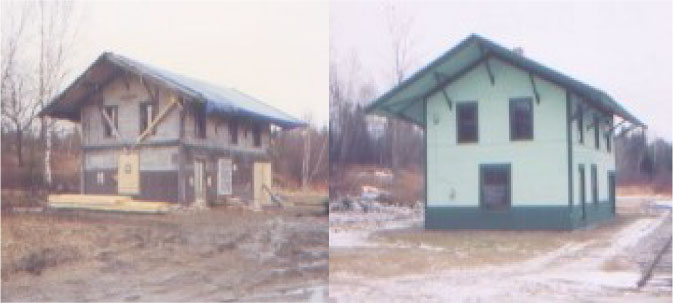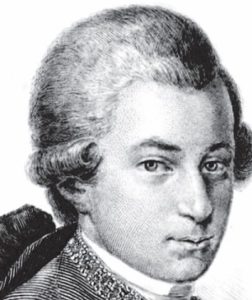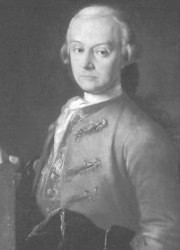Although the narrow-gauge railroad that was built inland from Wiscasset starting in 1894 never reached either Québec (its first name was the Wiscasset and Québec) or Waterville or Farmington (later it was the Wiscasset, Waterville and Farmington) (see The Town Line, Sept. 17), as the WW&F it was an integral part of towns along its route.
Reminiscences from Palermo include the WW&F. Dean Marriner mentioned the WW&F in two Kennebec Valley histories. The histories of China and Vassalboro include the WW&F. Clinton Thurlow, of Weeks Mills, wrote three small books on the WW&F. Ruby Crosby Wiggin titled her town history Albion on the Narrow Gauge; the cover has a sketch of engine number 7 taking on water at the Albion water tank, and her introduction says that for 40 years the WW&F was vital to the town and in 1964 residents still remembered it fondly.
Milton E. Dowe’s 1954 Palermo history (the town was incorporated in 1804, so this booklet would be a sesquicentennial history) points out that the WW&F did not even enter Palermo; the Branch Mills station, though called Palermo, was in China, west of the village the two towns share. However, Dowe wrote in the history and in his later book, Palermo, Maine Things That I Remember in 1996, the railroad carried Palermo residents on business and pleasure trips; it brought things they needed, like mail and foodstuffs for local grocery stores; and it took away things they sold, like milk and cream, lumber and bark, apples, potatoes and grain.
Dowe wrote in his history that the regular passenger fare to Wiscasset was $1.25, and excursion fares were $1.00 round trip. After the branch line to Winslow opened in 1902, Palermo residents had the option of riding to Waterville.
The railroad served traveling salesmen, Dowe wrote. They would sell to Palermo residents, play cards and swap stories in Branch Mills stores and spend the night at the Branch Mills Hotel. The next day they would move on to China Village or Albion.
The Palermo station was flanked by three potato houses where local potatoes were sorted and bagged ready for shipment, mainly to the Boston market. One year (presumably early in the 20th century), Dowe wrote, 100,000 bushels of potatoes were shipped through the station. At that time, farmers could expect to be paid $1 per barrel.
The creamery, also near the station, collected and pasteurized milk, brought in by the wagonload. Butter was made by the pound; Dowe said production averaged 3,000 pounds a week. The creamery later became an apple cannery and cider mill. Dowe described a line of 75 wagons waiting to unload apples during a week in 1920 when 3,000 bushels of cider apples arrived for processing.
The China bicentennial history says there were three other WW&F stations in China. From south to north, they were west of Weeks Mills; south of South China; and east of China Village. (The China Village station was on the east side of the head of China Lake; the village is on the west side. A causeway crosses the inlet stream.)
Each station was a small rectangular wooden building with an overhanging roof, the history says. The stations were painted the WW&F colors, two shades of green. Weeks Mills, South China, and China Village stations each had one nearby potato house.
The Weeks Mills station complex was west of the Sheepscot River and south of Main Street. It included a freight building and one of the WW&F’s five water tanks, put up in 1913; south of the station building was a roundhouse with space for four engines (used as a hay barn for a few years after the WW&F went out of business).
South of the roundhouse was the turntable on which an engine was shifted to either the Albion or the Winslow line. The China history describes the turntable as having ball bearings in the middle, a circular outer rim encasing a wheel and two tracks that could be turned different directions as needed. The machinery ran so easily that two men could operate it with a locomotive on it, the history says.
Frank Noyes opened a canning factory about 1904 and used the WW&F to ship out canned corn and succotash and later each fall apples and cider. The factory closed in 1931; the China history blames the Depression, which killed Noyes’ profit.
Thurlow’s three small, generously-illustrated books start with a focus on Weeks Mills, where he retired after a career teaching history. He found numerous original documents, like a 1911 set of operating orders. Among other things, the orders absolutely prohibited smoking around the trains and drinking alcohol on duty.
While the WW&F’s line to Winslow served Vassalboro between 1902 and 1915 or 1916, Vassalboro residents and goods traveled both ways. James Schad’s chapter in Anthology of Vassalboro Tales says that lumber, potatoes, canned corn and poultry were shipped to Wiscasset, to continue by water to Boston and other points south. Imports included coal to power North Vassalboro mills, feed and grain for farmers and supplies for local retailers.
Vassalboro had at least two WW&F stations. Schad’s article is accompanied by a photo of one on Oak Grove Road that served North Vassalboro, and Robbins’ bicentennial history mentions East Vassalboro’s “pretty little station,” later converted to a house that was evidently still occupied in 1971.
The photo in the Vassalboro anthology shows Engine No. 4, with no cars attached, in front of a rectangular wooden building. The engineer (probably) stands in shirtsleeves and cap, right hand on right hip, left arm draped casually on the engine. Two more formally dressed men accompany him, and three others stand on the trackside platform under the building’s overhanging roof.
Thurlow’s WW&F Two-footers includes 1964 photos of the former Winslow and North Vassalboro stations, both converted into two-story houses.
The Winslow line brought people to two attractions on the west side of China Lake a bit north of South China. One was a dance pavilion; excursion cars from Winslow took passengers out for the evening and brought them home around midnight, Thurlow and other sources say. Thurlow adds that north of the pavilion was a mineral spring where train crews were known to make unofficial stops so they and their passengers could have a refreshing break.
Wiggin speculated that the WW&F was more important to Albion people than to others it served because George H. Crosby, prominent among the railway’s founders, was an Albion native (see the article on Albion in the June 11 issue of The Town Line, p. 11), and because many Albion residents invested heavily in railroad stock. Additionally, she wrote, the railroad employed Albion residents (and those in other towns).
The Albion station had the northernmost of the WW&F’s five water tanks, coal sheds and a turntable. The building was the only one of the 15 WW&F stations (11 on the Albion line, four on the Winslow line) to have a second floor; Thurlow wrote that a conductor named Alfred Rancourt and his family lived above the station for 11 years.
In 1908 the Albion-Wiscasset fare was $1.50. In ideal conditions, the trip could be made in two hours; on the five-and-a-half mile stretch between China Village and Albion, several sources say the train often traveled at 60 miles an hour.
There are many, many local stories about the WW&F as a sort of family railroad. Most, unfortunately, are undated. Some are handed down; others local writers witnessed or heard directly from participants or observers.
Wiggin wrote from personal experience with the railroad and from interviews with other local residents, especially Earl Keef, who worked for the railroad for about 30 years, much of the time as an engineer. Consequently she included many personal stories in her Albion history.
For example, she quoted the neighbor who said she and two other women were admiring the first bananas they had ever seen in a local store window. The foreman of the Italian crew building the rail line bought each of them the first banana she’d ever eaten.
Another story is of a train that left Wiscasset at 2 a.m. in a snowstorm, with an attached plow and flange blocking the engineer’s view. At Palermo, the train was flagged down: a local doctor heading home after an emergency call was using the track ahead for his snowmobile (converted from an old Ford).
One of the crew volunteered to ride on the snowplow to watch out for the popular doctor. At the next trestle, they paused to make sure the doctor hadn’t fallen off it; but his tracks continued across.
The train finally caught up with him in Albion. China’s roads were plowed, so he switched to roads and reached Albion as the train did. Later, he said he made better time on the tracks than on the highway.
Yet another story, in Thurlow’s Weeks Mills “Y” (repeated in the China history), tells of Weeks Mills resident Edna Van Strien reaching East Vassalboro on the WW&F as the electric trolley by which she planned to continue to Augusta was leaving. The WW&F engineer stopped the train athwart the trolley tracks and waited until she was safely on board before moving out of the trolley’s way.
Ernest Marriner has two of the best anecdotes about the WW&F. Neither, alas, is dated.
The first, in his Kennebec Yesterdays (1954) concerns the line’s most successful – and unsuccessful – train. A mixed (freight and passenger) train, it carried an unusually large load of bark from Winslow, which was to go by sea from Wiscasset to a Massachusetts tannery. It also had an unusual number of passengers planning to witness the launch of a new schooner from a Wiscasset shipyard.
Marriner related that WW&F stockholders, informed of the big – and profitable — run, started touting the railroad to residents along the line. A welcoming committee assembled in Wiscasset.
The engineer and fireman added to the publicity by blowing the loud whistle constantly. Thus, Marriner wrote, they used a lot of steam and had to stop at water tanks. Perhaps because they allegedly had a generous supply of rum, they soon forgot about the water; and in Alna, the engine died. The load of bark eventually reached its destination, but neither the stockholders nor the excursionists were happy.
Marriner’s second story is in Remembered Maine (1957). He (like other local historians) wrote that WW&F engineers would usually stop wherever they saw someone trying to attract their attention, not just at stations and when the flag was up at a flag stop. One day, a Weeks Mills woman ran trackside and waved her apron.
The engineer shut down the engine and climbed out of the cab. The woman allegedly told him her hen was about to lay the twelfth egg; as soon as she had the full dozen, she wanted the engineer to take the eggs to the store in Wiscasset and swap them for a spool of thread and a bottle of vanilla.
Main sources:
Bernhardt, Esther, and Vicki Schad, compilers/editors, Anthology of Vassalboro Tales (2017).
Dowe, Milton E., History Town of Palermo Incorporated 1884 (1954).
Dowe, Milton E., Palermo, Maine Things That I Remember in 1996 (1997).
Grow, Mary M., China Maine Bicentennial History including 1984 revisions (1984).
Marriner, Ernest, Kennebec Yesterdays (1954).
Marriner, Ernest, Remembered Maine (1957).
Robbins, Alma Pierce, History of Vassalborough Maine 1771 1971 n.d. (1971).
Wiggin, Ruby Crosby, Albion on the Narrow Gauge (1964).
Websites, miscellaneous.
The WW&F Railway Station Restoration Project Albion, Maine
by Phillip Dow, Albion Historical Society
The year was 1976. Albion townsfolk banded together to present a week-long period celebrating the 200th anniversary of the birth of our great country, the United States of America.
It was suggested that the Albion railroad station be preserved. Nothing was done to improve the structure for another 10 years. New blood got involved and the Albion Historical Society was formed. Their first major project was to try to save the old railroad station. John and Ora Rand, the owners of the station, graciously gave it to the Albion Historical Society for a museum.
Time and money were the big factors holding up progress on the restoration of said building. Donations finally came in and away we went. Dirt work around the building started. The old building was braced up, inside and out. The station had to be gutted, both downstairs and up. Cobwebs, spiders, bats and mice had to find a new home.
But, 10 years later, with the help of many people, a concrete slab was poured to the tune of $20,000. Floor joists and studs were added. New lumber replaced the old rotted boards. Asphalt shingles and a new chimney were added. A $500 grant was received and new wooden-framed windows were purchased.
We discovered stamped on one of the hidden window sills “Mathews Bros., Belfast, Me.” The original windows had been installed in 1895. Where did we purchase the new windows? Mathews Bros., with one “t,” Belfast, Me., one hundred years later.
Pine clapboard siding was painted and added. The interior of the railroad station is fairly simple in style, but it is the simple style that we should go back to, at least for a few days.

Albion railroad station, before, left, and after restorations.
 (NAPSI)—Nasal congestion is nothing to sneeze at. It affects roughly 20 percent of the population and is associated with reduced quality of life, difficulty sleeping, reduced daytime performance, and increased need for healthcare. In addition to the physical misery, it is estimated the annual financial impact of chronic congestion is more than $5 to $10 billion. Fortunately, scientists are coming up with new and better ways to deal with the problem.
(NAPSI)—Nasal congestion is nothing to sneeze at. It affects roughly 20 percent of the population and is associated with reduced quality of life, difficulty sleeping, reduced daytime performance, and increased need for healthcare. In addition to the physical misery, it is estimated the annual financial impact of chronic congestion is more than $5 to $10 billion. Fortunately, scientists are coming up with new and better ways to deal with the problem.

 Note to residents of China:
Note to residents of China:











 Who are the only two Red Sox managers to be named Manager of the Year?
Who are the only two Red Sox managers to be named Manager of the Year?